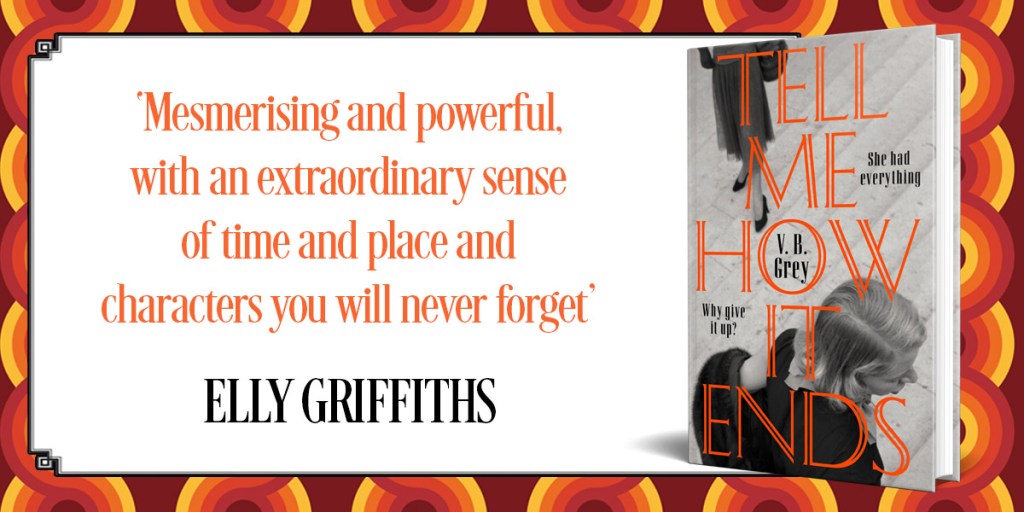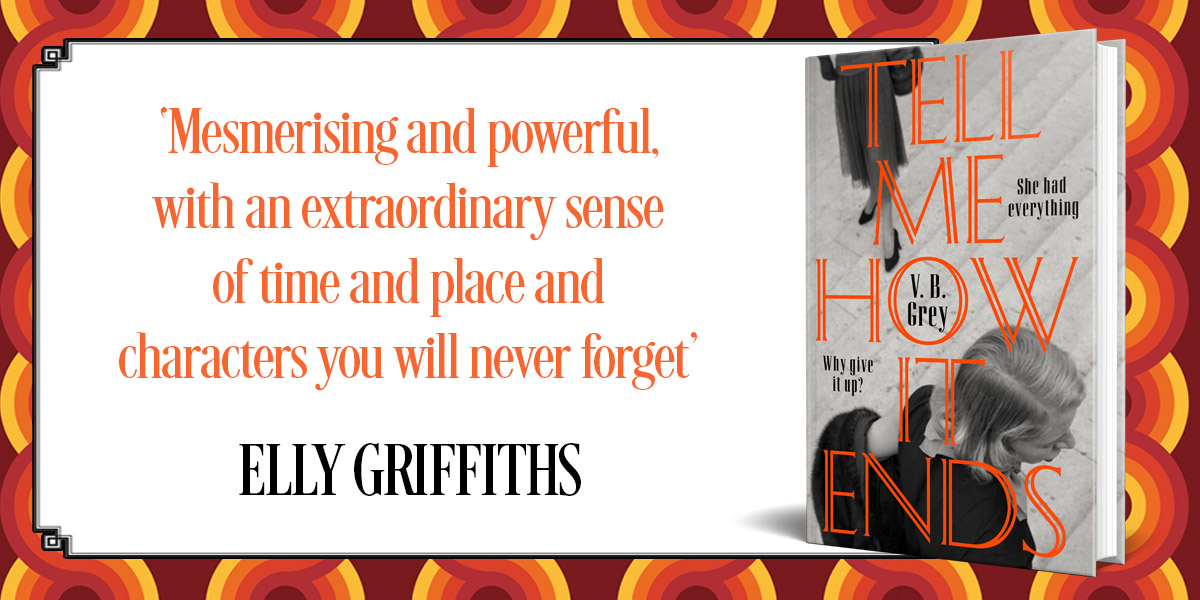The damaged heroes of post-war American noir movies

V.B. Grey examines the damaged heroes of post-war American noir movies who inspired characters in her novel Tell Me How It Ends.
As a child growing up in the 1960s I couldn’t help but be aware of the long shadow still cast by the Second World War, a shadow also present in post-war American noir movies.
My novel Tell Me How It Ends is set in London in 1963, the year in which the Fifties truly became the Sixties, but my three central male characters have all seen wartime military service and two still suffer its ill effects. I wanted to echo the haunting sense of disillusion and disconnection from some of my favourite black & white movies to enhance my characters’ emotional worlds.
Although ‘film noir’ was a term coined in France after the war, the classic hard-boiled noir hero had already been created in the fiction of James M. Cain, Raymond Chandler and Dashiell Hammett. Later film adaptions of their books made screen icons of Humphrey Bogart and Robert Mitchum – stars able to portray a potent mix of cynicism and vulnerability that must have appealed to servicemen returning from action in Europe and the Pacific.
While the men were away fighting, American women also had to adapt to a changing world. In The Blank Wall (1947) by Elisabeth Sanxay Holding, filmed in 1949 as The Reckless Moment with Joan Bennett and James Mason, the men who had traditionally shielded women from danger are emasculated by absence (serving overseas), youth or age. Yet the self-deprecating narration of the suburban housewife and mother gently suggests that, when an unexpected nightmare of blackmail and violence strikes her family, she rather enjoys the discovery of her own courage and ingenuity. Not all returning men welcomed such new self-reliance.
The sometimes powerless confusion of men facing unsettling new complexities and disappointments at home, especially the perceived threat of female dominance, was dramatized in such iconic noir movies as Double Indemnity (1944) in which femme fatale Barbara Stanwyck double-crosses her all-too-willing-to-be-manipulated co-conspirator Fred MacMurray, and Build My Gallows High (1947), in which a fatalistic Robert Mitchum simply doesn’t care that the beautiful Jane Greer is exploiting him.
In contrast, The Best Years of Our Lives (1946) was a hugely successful film that set out to deal forthrightly with the difficulties of American servicemen re-adjusting to civilian life. Both its visual mood and its characterisation are quite different. Most importantly, its female characters are patient, resilient and understanding, ready to provide a healing domestic environment for their physically and mentally war-damaged men. Even the one unsympathetic woman is no femme fatale, merely a chiselling good-time girl who had fallen for the uniform, not the man.
Noir movies, however, were able to reflect a far deeper malaise, not only about women but also about men’s unease with the ambiguity of their victory. The claustrophobia and disorientation of noir visual techniques – distorted camera angles, shadows, strange reflections – must have resonated with veterans suffering from depression and battle fatigue – the name given to symptoms earlier described as shell shock and today as Post-traumatic Stress Disorder.
One of the characters in my novel, Guy Brody, is partly inspired by Hollywood actor Audie Murphy, who had been one of the most decorated combat soldiers of World War Two. Murphy went on to act in numerous Westerns and reluctantly agreed to play himself in the 1955 film To Hell and Back, yet suffered from serious depression, insomnia and nightmares and slept with a loaded handgun under his pillow.
Murphy was one of very few to speak openly about battle fatigue. In her compelling novel In A Lonely Place (1947), later filmed with Humphrey Bogart and Gloria Grahame, Dorothy B. Hughes portrays an extreme version of the paranoia, memory lapses and violence that can result from PTSD. Her protagonist, former fighter pilot and unreliable narrator Dix Steele, is also an early psychological profile of what we now call a serial killer.
What I love about all noir characters, male and female, is their self-acknowledged moral ambiguity. As Robert Mitchum’s character says of the femme fatale in Build My Gallows High, for whom, ultimately, he is willing to die: ‘She can’t be all bad – no one is. But she comes the closest.’
Who wouldn’t want to be inspired by such complex characters?
Tell Me How It Ends is now out in hardback, audio and e-book.
V.B. Grey is the pseudonym of screenwriter and former journalist Isabelle Grey, whose DI Fisher series of crime novels are also published by Quercus.







